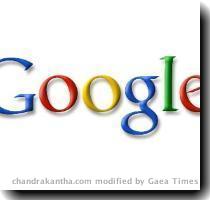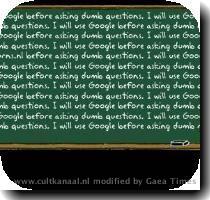Review: Google navigation app shines, but frequent travelers will benefit from paid products
By Anick Jesdanun, APWednesday, January 20, 2010
Review: Google navigation good for occasional use
SULLIVAN’S ISLAND, S.C. — I have plenty of gadgets, so the thought of buying and carrying a separate GPS navigational device never appealed to me. Yet the thought of getting lost appealed to me even less.
So I figured my problems were solved when Google came along with a phone application that offers the same spoken-aloud, turn-by-turn directions of navigational devices — all for free.
I quickly learned you get what you pay for. Although Google’s app shines in a few important areas and works well for occasional travelers, frequent motorists will appreciate the extra features that come with a price.
I put Google’s new Maps Navigation app head-to-head with Garmin’s $150 nuvi 1200 device during a 1,846-mile road trip from Edison, N.J., to Sullivan’s Island and back. I later tested an $80 iPhone app from TomTom in New Jersey. I found both to be more polished than Google’s freebie.
For starters, the voices that speak directions sound much more human in Garmin’s and TomTom’s software. Both even let me change languages to Chinese, Spanish, Afrikaans and many more, switch between male and female voices or opt for a British accent. By contrast, I have to contend with a robotic drone in Google’s app, which I tested on a Motorola Droid powered by Google’s Android operating system.
More importantly, though, both Garmin and TomTom are far better at telling me where to go. For instance, they direct me to an “all turns” lane on the right when I’m prohibited from making a left turn or U-turn at an intersection.
Google’s app is supposed to do that, but it missed many turn lanes along Route 1 through central New Jersey. The robotic voice instructed me to ignore traffic laws and told me to “turn left at County Road 682/Finnegan Lane” as I stared at a “no turns” sign ahead.
The app also tends to load up directions with useless information, such as the county route number that few people know and use.
Both Garmin and TomTom offer many ways of showing how much longer I have left to drive. With Google, I get only the amount of time left. Garmin can also display distance remaining or estimated time of arrival (which was on target when driving at the speed limit). The TomTom app shows all that at once and throws in nearby gas stations and the speed limit, which appears red when you’re, ahem, speeding.
The paid products also give you such options as directions that avoid toll roads and ferries.
That said, Google’s software is a vast improvement over the online mapping services that have long been available for free. Those don’t speak directions out loud, posing a safety hazard for people traveling alone.
And Google, not surprisingly, wins hands down when it comes to augmenting navigation with search functions.
Because I signed in to the service using my Google account, addresses stored in my Gmail contacts list pop up as suggestions as I type. And street addresses are easy to look up even without knowing the city and state.
Case in point: I entered an address in Sullivan’s Island but typed in the nearby city of Charleston. Google figured it out. From my office in New York City, I typed “Pennsylvania Avenue” and got nine options in New York, New Jersey and Pennsylvania (the one with the White House must be too far).
Garmin and TomTom are more rigid. TomTom’s app for the iPhone requires me to enter a state, even for major cities such as Baltimore, as well as the street name. With Google, I merely type “Baltimore” for general directions there. Garmin does have an option for selecting from a list of city names, but it doesn’t correct for misspellings such as “Seatle” and “Buston,” as Google helpfully does.
In addition, I was often able to find directions on Google’s app simply by typing in the name of a hotel, movie theater or school. On Garmin’s unit, I’d see an hourglass showing the search was in progress — yet more than once, it’d still be in progress by the time I reached the destination using Google’s directions. I’m told I was too specific — telling it to find “Starbucks New York” rather than simply “Starbucks.” TomTom was better, but not as good as Google.
Google’s app also works better indoors. When a GPS signal isn’t available, it can estimate the starting location based on nearby cell towers and Wi-Fi access points.
And because Google keeps its mapping data on Internet servers rather than on the device, you automatically get information on new roads once Google has them. That also means you’d better have an unlimited data plan with your phone service.
Overall, I think the free Google app works well when that’s all you have. As someone who drives only once or twice a year, I can’t see myself spending big bucks on navigation.
Those who travel regularly, though, will find the investment worth it.
TomTom and Garmin both have a range of standalone products and apps for various phones, with different features at different prices. TomTom’s iPhone app, for instance, is $20 cheaper without Canadian roads, while Garmin offers its own phone, the Nuvifone, for $200 with a two-year service plan from AT&T. Some versions even factor in traffic when figuring directions.
Google’s Maps Navigation is free with any phone running the company’s Android 1.6 software or later. For other devices, you can get only the basic Google Maps app without the spoken-aloud directions — also for free.
There’s no doubt the Google app will get better, pushing Garmin and TomTom to improve their search capabilities. Perhaps we’ll get the best of all worlds one day — and perhaps for free.
Got a technology question? Ask us at gadgetgurus(at)ap.org.
Tags: Baltimore, Communication Technology, Computing And Information Technology, Consumer Electronics, Gps Devices, Maryland, Mobile Communications, New Jersey, New York, North America, Software, South Carolina, Sullivan's Island, Traffic, Transportation, Travel, United States
|
February 27, 2010: 8:49 pm
What makes me like this site is it gives all the important information that I need to know. It is very informative ad it gives all the details about the subject. Nice posting. I have bookmarked your site. |


Focus Factor